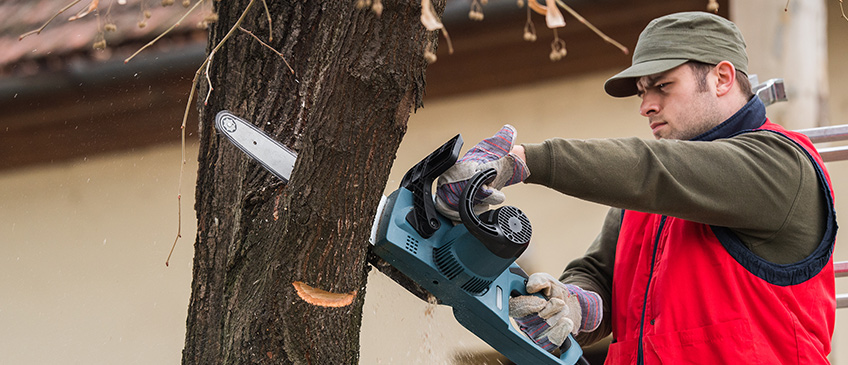The best time to trim your trees is in late winter, about 6 weeks before the first day of spring. This may come as a surprise to those who hold the commonly held, yet mistaken belief that trees should be pruned in the fall. To find out why late winter is the optimal time for trimming trees – and fall is the worst – read on!
Better Visibility
The tree’s leaves have dropped, and you probably have the stark contrast of white snow behind darker tree branches. These factors will help you clearly see where you need to prune or cut back branches, as well as where you might experience some new growth. Just remember, it’s not a good idea to prune trees in the fall, right after the leaves drop, because the tree may still be growing. Open exposure to the cold night temperatures during the fall will stunt this growth. So why can the tree withstand pruning during the cold winter?
Winter Brings Dormancy
Trees go into a period of dormancy over the winter, during which they can withstand freezing temperatures and other harsh elements. This means that you won’t risk stunting new growth by pruning tress in late winter. Not only this, but you’ll actually save the tree some energy by taking away areas that don’t need to produce leaves or flower buds later on in the spring. This will ensure the tree will utilize its energy and nutrients on good sections of the tree, leading to better growth on the best branches.
While tree growth stops in the winter, it will still have sap inside. While the sap production considerably slows during the winter, the tree may still begin to bleed a little bit of this sap after cutting. This is perfectly okay, if a little messy.
Limited Exposure for Fresh Cuts
By late winter, the growing season is right around the corner. While exposure to the elements won’t kill your tree when trimmed at the right time, it’s still not a great idea to leave a cut exposed for longer than it has to be. Trimming trees about 6 weeks before the first day of spring will ensure that the tree isn’t unnecessarily exposed to the elements for too long. By waiting until late winter to trim your tree, it’ll have a better chance of increased growth and less risk damage.
Reduced Risk of Disease and Pest Infestation
The warm, wet months of summer and early fall spell trouble for those who attempt tree trimming. This is because making cuts in your trees in wet or humid air can promote mold and mildew growth in the tree, and hot weather can cause sap to become thicker and sweeter, which attracts bugs and other pests. It’s best to make the necessary cuts during cold winter months when the air is dry, and there are less bugs and pests to attract with sap.
If you typically prune your trees in the fall, give tree trimming in late winter a shot this year instead. You’ll be pleasantly surprised come spring and summer, when your trees will grow into lush, beautiful focal points in your yard.

